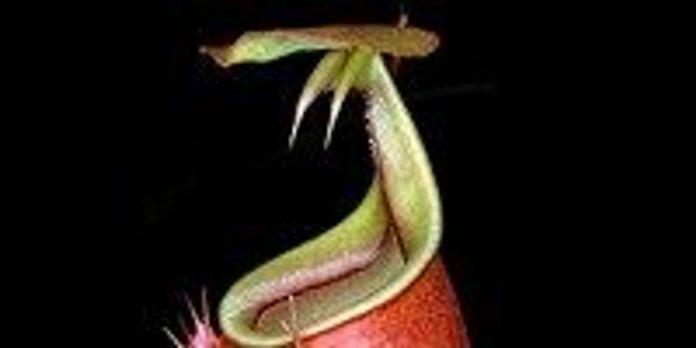At least one species of pitcher plant native to Borneo learned how to catch more ants by altering the time frame that the interior surface of the plant stays wet. The “learning” is a unique evolutionary adaptation that allows the pant to eat more ants based on the chemically induced behavior of ants. Dr. Ulrike Bauer from Bristol’s School of Biological Sciences and colleagues reported the discovery in the edition of the journal Proceedings of the Royal Society B.
The interior surface of pitcher plants produces a group of chemicals that makes the surface slick. The slick surface helps the plant to catch more ants. The researchers have found that the pitcher plants know when to make the surface slick and when to keep the surface dry based on the number of ants the plant can catch. The activity may be a function of the amount of light the plant experiences during a given day.
The scientists tested their theory in laboratory conditions by artificially keeping the surface of the pitcher plant wet all of the time. The plant caught fewer ants if the surface was wet all of the time. The plant has adapted to the behavior of ants so that the plant gets more to eat. The shape and color of the pitcher plant are an attractant to ants. The shape also helps trap ants and other insects.
Ants have defined roles. Some ants are scouts. These ants find food for the rest of the colony. The scouts leave a scent trail that leads the other workers to the newly found food source. The pitcher plant waits to get wet until the largest possible numbers of ants are on its surface. The reaction guarantees the plant gets more food. The adaptation is evolutionary and does not indicate that the plants think even at the level that ants do.















